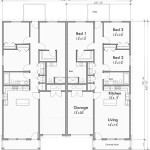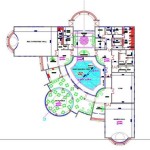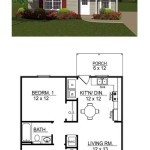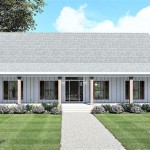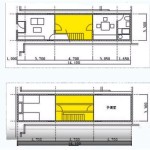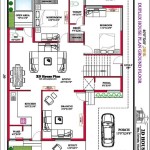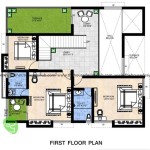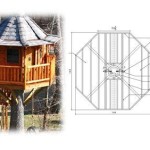Sears House Floor Plans: A Guide to Understanding and Identifying America's Mail-Order Homes
The history of Sears, Roebuck and Co. is intertwined with the story of the American Dream. Beyond its famous catalog, Sears achieved a significant cultural impact through its "Modern Homes" program, which offered mail-order houses from 1908 to 1940. These homes, sold across the United States, provided affordable housing options and allowed families to build their own homes with pre-cut materials and detailed instructions. Understanding Sears house floor plans is crucial for identifying and appreciating these often-overlooked pieces of architectural history.
The "Modern Homes" catalog featured a wide variety of house designs, from modest bungalows to larger, more elaborate two-story homes. These designs were targeted toward different income levels and geographical regions, making Sears houses a ubiquitous feature of the American landscape. The catalog provided prospective homeowners with detailed floor plans, elevations (exterior views), and specifications, giving them a clear understanding of the home they were purchasing. Today, these floor plans serve as invaluable tools for identifying and researching these historic homes.
Key Point 1: Deciphering the Sears House Floor Plan
Sears house floor plans were designed to be easily understood by both experienced builders and novice homeowners. The floor plans typically included detailed dimensions, room layouts, window and door placement, and even the locations of plumbing and electrical fixtures. These plans acted as a roadmap for the construction process, ensuring that the house was built according to Sears' specifications.
A typical Sears house floor plan would display the overall dimensions of the house, as well as the dimensions of individual rooms. Walls were clearly marked, and the locations of doors and windows were indicated with specific symbols. The plans also showed the placement of staircases, closets, and other built-in features. In some cases, the floor plans included notations about the type of flooring, wall finishes, and other decorative elements.
Understanding these symbols and notations is key to accurately interpreting a Sears house floor plan. For example, a series of dashed lines might indicate an overhead cabinet or shelf, while a solid line with a curved end might represent a swing door. A symbol resembling a toilet would indicate the location of the bathroom, and a symbol resembling a sink would indicate the location of the kitchen sink. By carefully studying these symbols and notations, one can gain a comprehensive understanding of the house's layout and design.
Furthermore, the floor plans often included details about the construction materials and methods used in building the house. For example, the plans might specify the size and spacing of the floor joists, the type of sheathing used on the exterior walls, and the type of roofing materials used on the roof. This information is valuable for understanding the structural integrity of the house and for making informed decisions about repairs and renovations.
Key Point 2: Identifying Sears Houses Using Floor Plans and Catalogs
Identifying a Sears house can be challenging, as many of these homes have undergone renovations and modifications over the years. However, floor plans and Sears catalogs are invaluable tools for identification. By comparing the floor plan of a suspected Sears house to the floor plans featured in the Sears catalogs, it is often possible to confirm or deny its origin.
Sears published several catalogs each year, offering a wide variety of house designs. These catalogs featured detailed floor plans, elevations, and descriptions of each model. The catalogs also included information about the pricing and availability of different options and upgrades. Researchers can access digitized versions of these catalogs online, allowing them to search for specific house models and compare them to existing structures.
When comparing a floor plan to a Sears catalog, it is important to pay attention to details such as the dimensions of the rooms, the placement of windows and doors, and the overall layout of the house. Even minor discrepancies can indicate that the house is not a Sears model. However, it is also important to remember that some Sears houses were customized by their owners, which can lead to variations in the floor plan.
Beyond floor plans, certain architectural details are common in Sears houses. These include specific window styles, door designs, and trim details. For instance, many Sears houses featured five-petal rosette trim around door and window frames. The presence of these details can provide further evidence that a house is a Sears model.
Another helpful identifying feature is the presence of stamped lumber. Sears pre-cut lumber was often stamped with a letter and number code, indicating its origin and purpose. While not all Sears lumber was stamped, finding stamped lumber during renovations can be a strong indicator of a Sears house.
Key Point 3: The Evolution of Sears House Designs and Floor Plans
Over the course of its "Modern Homes" program, Sears introduced a variety of house designs, reflecting changing architectural styles and consumer preferences. The floor plans evolved over time, incorporating new features and amenities. Understanding this evolution is crucial for accurately dating and identifying Sears houses.
In the early years of the program, Sears offered a range of simple bungalows and cottages, reflecting the popularity of these styles during the early 20th century. These houses were typically small and affordable, making them accessible to a wide range of families. The floor plans for these houses were often simple and straightforward, with a focus on functionality and efficiency.
As the program evolved, Sears introduced larger and more elaborate house designs, including two-story homes and larger bungalows. These houses often featured more complex floor plans, with multiple bedrooms, bathrooms, and living spaces. The floor plans also incorporated new amenities, such as built-in cabinets, fireplaces, and sunrooms.
The Sears "Honor Bilt" series represented the highest quality homes offered by Sears. These homes featured higher quality materials and more detailed construction. The floor plans for "Honor Bilt" houses were typically more elaborate and sophisticated than those of the standard models.
Changes in architectural styles also influenced Sears house designs. For example, the Craftsman style, with its emphasis on natural materials and handcrafted details, was popular during the early 20th century. Sears offered several Craftsman-style houses, featuring floor plans that reflected the characteristics of this style. Similarly, the Colonial Revival style, with its emphasis on symmetry and classical details, influenced Sears house designs during the 1920s and 1930s. The floor plans for Colonial Revival houses often featured formal living rooms, dining rooms, and symmetrical facades.
The Great Depression had a significant impact on the Sears "Modern Homes" program. As the economy faltered, demand for new housing declined. Sears responded by offering smaller and more affordable house designs. The floor plans for these houses were often simpler and more compact, reflecting the need for affordability and efficiency.
Ultimately, understanding Sears house floor plans is not just about identifying old houses; it's about understanding a piece of American history. These homes represent a time of innovation, affordability, and the pursuit of the American Dream. By studying these floor plans, we can gain a deeper appreciation for the ingenuity and craftsmanship that went into these iconic homes.
The legacy of Sears houses continues to resonate today. These homes stand as a testament to the power of mass production and the enduring appeal of affordable housing. By studying their floor plans and architectural details, we can learn valuable lessons about design, construction, and the evolution of the American home.

1925 Sears House Mission Style Home Plan 4 Bedrooms Printed Architectural Plans

Sears Homes 1927 1932 Kit Floor Plans Vintage House

The Woodland By Sears Modern Homes 1923 Foursquare Kit House

The Sears Elmhurst Vintage House Plans Tudor Blueprints

Sears Modern Homes House Kits From Catalogs Hooked On Houses

Pin On Sears Modern Homes The Early Years

Historic House Plans Sears Roebuck And Co Modern Home No 137 Gardens To Gables

Sears House Seeker Crescent Frank Ohlson S Testimonial

1916 Sears House Plans Modern Home 264b102 Prairie Box Foursquare

Pin On House Plans

